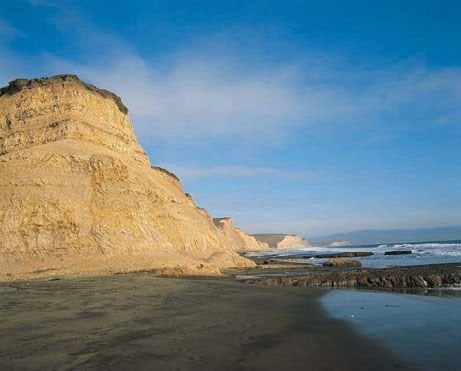 Facebook
Facebook
 X
X
 Instagram
Instagram
 TikTok
TikTok
 Youtube
Youtube

About a one-hour drive from the densely populated San Francisco Bay Area, Point Reyes National Seashore was established to protect wilderness and natural ecosystems along the California coastline.
Point Reyes is rich in biological diversity: over 45% of North American bird species are sighted in the park, and nearly 20% of California's plant species grow here. In all, over 1,000 plant and animal species call the area home.
Located on the Marin coast, the park was established by President John F. Kennedy in 1962. It encompasses over 71,000 acres, including 33,000 acres of wilderness. Estuaries, windswept beaches, coastal grasslands, salt marshes and coniferous forests create 86 miles of unspoiled and undeveloped coastline. There are 147 miles of hiking trails, backcountry campgrounds and numerous beaches.
The best time to visit Point Reyes National Seashore is during spring (March–May). If you visit in March, you might see the California gray whales as they migrate from Baja to the Alaskan feeding waters. During mid-spring, you may see the elephant seal pupping season.
The park is open daily (with overnight camping available by permit only) from sunrise to sunset throughout the year. Point Reyes visitor centers offer a free map of the park's trails, indicating which trails are designated for bike travel. You can explore trails through evergreen forests, coastal scrub, or along estuaries and beach bluffs.
Located at beautiful Drakes Beach, the Kenneth C. Patrick Visitor Center contains exhibits that focus on 16th century maritime exploration and marine environments. A minke whale skeleton is suspended from the ceiling. Allow 20-30 minutes to view the exhibits.
The Lighthouse Visitor Center offers exhibits on the historic Point Reyes Lighthouse as well as on whales, seals and sea lions, wildflowers, birds and maritime history. It’s located 45 minutes west of Bear Valley on the Point Reyes Headlands. There's a 0.4-mile walk (mostly uphill) from the parking lot to the visitor center. Allow at least two hours round-trip for travel to the lighthouse from the Bear Valley area and another hour to tour the visitor center and lighthouse.
Headlands and beaches on the Pacific Coast are subjected to frequent heavy fogs (most common in the months of July, August and September), and the rainy season is December through March. I’d recommend dressing in layered clothing if you plan to visit.


About a one-hour drive from the densely populated San Francisco Bay Area, Point Reyes National Seashore was established to protect wilderness and natural ecosystems along the California coastline.
Point Reyes is rich in biological diversity: over 45% of North American bird species are sighted in the park, and nearly 20% of California's plant species grow here. In all, over 1,000 plant and animal species call the area home.
Located on the Marin coast, the park was established by President John F. Kennedy in 1962. It encompasses over 71,000 acres, including 33,000 acres of wilderness. Estuaries, windswept beaches, coastal grasslands, salt marshes and coniferous forests create 86 miles of unspoiled and undeveloped coastline. There are 147 miles of hiking trails, backcountry campgrounds and numerous beaches.
The best time to visit Point Reyes National Seashore is during spring (March–May). If you visit in March, you might see the California gray whales as they migrate from Baja to the Alaskan feeding waters. During mid-spring, you may see the elephant seal pupping season.
The park is open daily (with overnight camping available by permit only) from sunrise to sunset throughout the year. Point Reyes visitor centers offer a free map of the park's trails, indicating which trails are designated for bike travel. You can explore trails through evergreen forests, coastal scrub, or along estuaries and beach bluffs.
Located at beautiful Drakes Beach, the Kenneth C. Patrick Visitor Center contains exhibits that focus on 16th century maritime exploration and marine environments. A minke whale skeleton is suspended from the ceiling. Allow 20-30 minutes to view the exhibits.
The Lighthouse Visitor Center offers exhibits on the historic Point Reyes Lighthouse as well as on whales, seals and sea lions, wildflowers, birds and maritime history. It’s located 45 minutes west of Bear Valley on the Point Reyes Headlands. There's a 0.4-mile walk (mostly uphill) from the parking lot to the visitor center. Allow at least two hours round-trip for travel to the lighthouse from the Bear Valley area and another hour to tour the visitor center and lighthouse.
Headlands and beaches on the Pacific Coast are subjected to frequent heavy fogs (most common in the months of July, August and September), and the rainy season is December through March. I’d recommend dressing in layered clothing if you plan to visit.
Comments